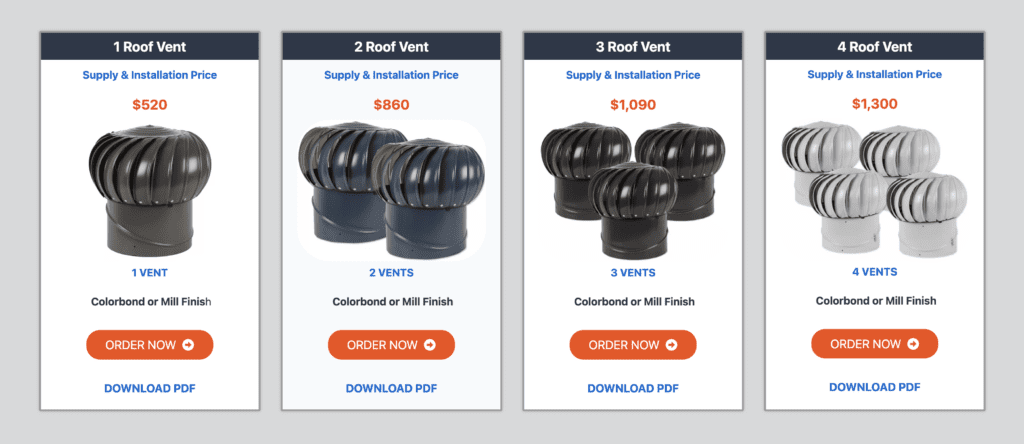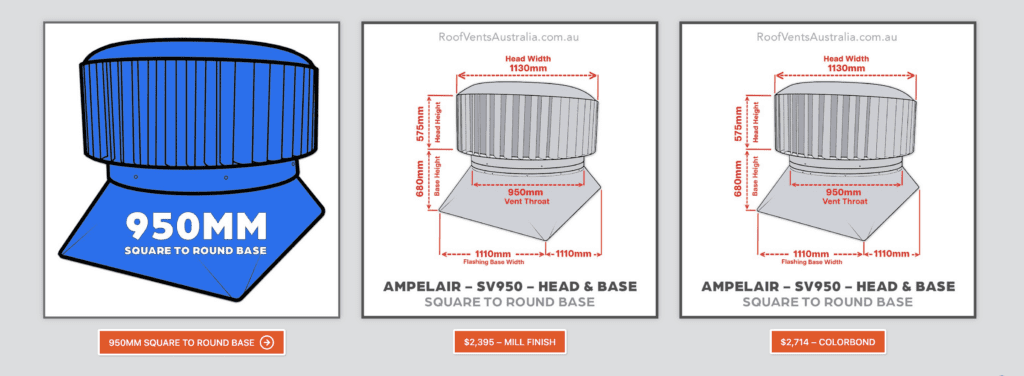Whirlybirds and Ridge Vents: The Essential Guide for the Australian Consumer


Whirlybird Roof Vents Installation packages Greater Sydney Area – Click Here >
Gutter Sumps to the Trade Shipped Free Australia Wide – Click Here >
Rain Heads to the Trade Shipped Free Australia Wide – Click Here >
Dambuster Rain Heads Shipped Free Australia Wide – Click Here >
Eco-Friendly Roofing Insulation Shipped Free – Click Here >
Introduction
For those dwelling in the beautiful landscape of Australia seeking to make informed choices on their home ventilation, understanding the distinction between whirlybirds and ridge vents is imperative. This article outlines each product’s characteristics, thereby assisting prospective buyers in making educated decisions.
Whirlybird vs Ridge Vent: A Comparison
A whirlybird, or turbine vent, is a type of ventilator designed to extract heat from your attic. Its operating mechanism utilises wind power, efficiently removing hot air without the need for electricity.
Conversely, ridge vents run along your roof’s peak, offering a continuous ventilation strip. Ridge vents rely on natural convection, expelling warm air and allowing fresh, cooler air through soffits or intake vents.
Zoning & Ventilator Placement
Understanding zoning is crucial when installing these ventilation systems, as local regulations may influence your decision. Ensure compliance with your area’s zoning laws, and always secure local building permits before proceeding with installations.
Ventilator placement also plays a significant role in effectiveness. Careful positioning optimises airflow and maximises energy savings while providing efficient air exchange.
Weatherproofing & Winter Condensation
Weatherproofing is vital for the durability of these ventilation systems. Both whirlybirds and ridge vents are designed to withstand severe weather conditions, including the harsh Australian sun, rain, and wind uplift.
Winter condensation is another consideration. Proper ventilation reduces the likelihood of condensation accumulation, maintaining optimal indoor air quality and safeguarding your home’s structural integrity during colder months.
User Guides & Velocity Reducers
For those unfamiliar with ventilator installations, user guides are invaluable resources. Thoroughly read the manuals provided with your whirlybird or ridge vent to facilitate a hassle-free installation and avoid common pitfalls.
Velocity reducers can be implemented to moderate the speed at which air is expelled. These devices are particularly useful in maintaining a pleasant indoor environment, especially during fluctuating seasonal adjustments.
Performance & Efficiency Considerations
Ventilation Rate & Air Exchange
The ventilation rate is a vital metric to consider when purchasing. It refers to the volume of air circulated through your space within a specific timeframe. Higher ventilation rates often correlate with improved air exchange, thus enhancing indoor air quality and providing fresher air.
Energy Savings & Utility Bills
Energy-efficient ventilation systems contribute significantly to lower utility bills. Whirlybirds and ridge vents are popular choices due to their minimal operational costs and excellent performance in promoting energy savings.
Manual Control & Night Flushing
Some advanced whirlybird models allow manual control, enabling users to regulate airflow according to their preferences. This feature is invaluable for executing night flushing techniques, where cooler night air is introduced to reduce indoor temperatures.
Design & Installation Considerations
Building Orientation & Operable Windows
Your building’s orientation impacts the effectiveness of ventilation systems. Whirlybirds and ridge vents perform best when strategically placed to optimise air intake and exhaust vents. Operable windows can also facilitate improved air circulation, working in tandem with these ventilation devices.
Metal Roof Considerations & Thermal Imaging
Metal roofs demand special attention during installation. Thermal imaging tools can help pinpoint optimal installation spots, ensuring your ventilation system works efficiently with your specific roof type.
Purchasing & Financial Considerations
Brand Comparisons & Customer Satisfaction Ratings
With myriad brands offering ventilation solutions, conducting a comparative analysis is advisable. Investigate customer satisfaction ratings and reviews to gauge the reliability and performance of different products.
Shipping Costs & Tax Incentives
For Australian buyers, considering shipping costs is essential when purchasing from international vendors. Also, explore available tax incentives for installing energy-efficient systems, as these can significantly offset your initial investment.
International Standards & Solar Battery Lifespan
Adherence to international standards guarantees your ventilation system’s quality and reliability. If you opt for solar-powered models, understanding the solar battery’s lifespan is crucial for anticipating future maintenance and replacement needs.
Turbine Blade Design & Fresh Air Considerations
Turbine blade design influences the whirlybird’s performance. Opt for models that efficiently draw in outside air, promoting fresh air circulation within your space.
Aesthetic & Architectural Considerations
Atrium & Seasonal Adjustments
For homes with an atrium, whirlybirds can offer impressive ventilation solutions. Additionally, systems that allow easy seasonal adjustments enable users to tailor ventilation requirements as weather conditions change.
Conclusion: Making An Informed Choice
Investing in a ventilation system demands thoughtful consideration and understanding of various factors, including winter condensation, ventilation rates, and utility bills. Equip yourself with knowledge, explore user guides, and consider each product’s unique features, from velocity reducers to weatherproofing.
With this guide’s assistance, Australian consumers can navigate the market confidently, selecting ventilation solutions that not only meet their needs but also offer durability, efficiency, and value for money.

